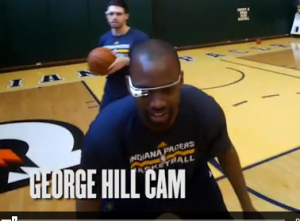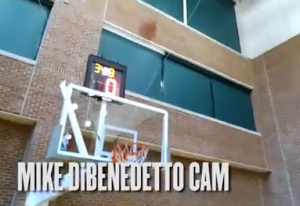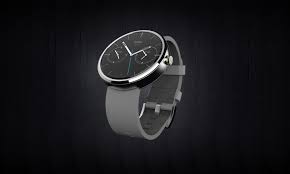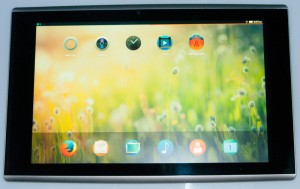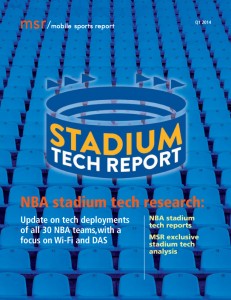 The news that NBA teams are now partnering with San Francisco’s CrowdOptic to deliver Google Glass views to stadium big screens is a pretty interesting development to contemplate, on the heels of our Stadium Tech Report for Q1 2014, which looks at wireless network deployments in NBA stadiums. Done in a team-approved, controlled fashion, a few Google Glass streams could be pretty interesting. But CrowdOptic’s capabilities, as I understand them, are much bigger, and could theoretically allow for fans to see what other fans are seeing, if both are wearing Google Glass. The question we have for that latter idea is: Can the stadium networks handle all that traffic?
The news that NBA teams are now partnering with San Francisco’s CrowdOptic to deliver Google Glass views to stadium big screens is a pretty interesting development to contemplate, on the heels of our Stadium Tech Report for Q1 2014, which looks at wireless network deployments in NBA stadiums. Done in a team-approved, controlled fashion, a few Google Glass streams could be pretty interesting. But CrowdOptic’s capabilities, as I understand them, are much bigger, and could theoretically allow for fans to see what other fans are seeing, if both are wearing Google Glass. The question we have for that latter idea is: Can the stadium networks handle all that traffic?
A good place to start to figure out the answer to that question is by downloading our Stadium Tech Report for Q1 2014, available free right now from our site. The 35-page PDF report delivers a capsule profile of each and every NBA team and whether or not it has Wi-Fi and DAS services in its stadiums. In our research we found Wi-Fi to be almost universal, with 79 percent — or 23 of 29 NBA facilities — all having fan-facing Wi-Fi. There is also a DAS (Distributed Antenna System) for enhanced cellular in almost every arena, and the ones that don’t have it are either installing it now or plan to soon.
But can those networks handle a crowd of Google Glass wearers, all broadcasting video of their court views? A good question for the next report, maybe. But you’ll need to know what the current network deployment situation is first, so… DOWNLOAD THE REPORT!
